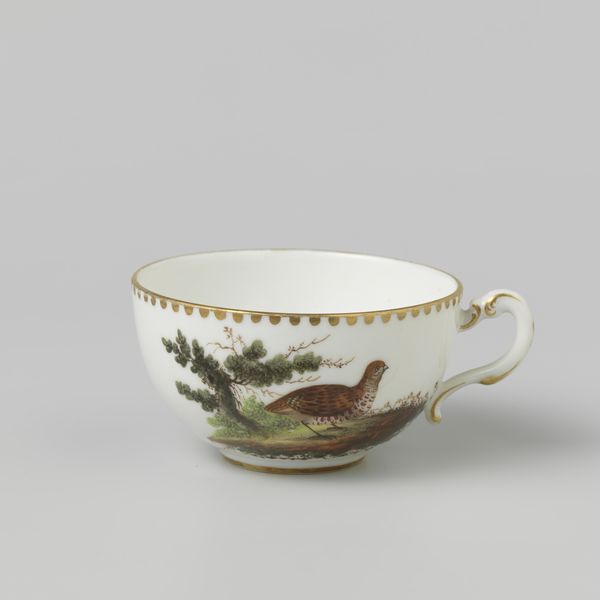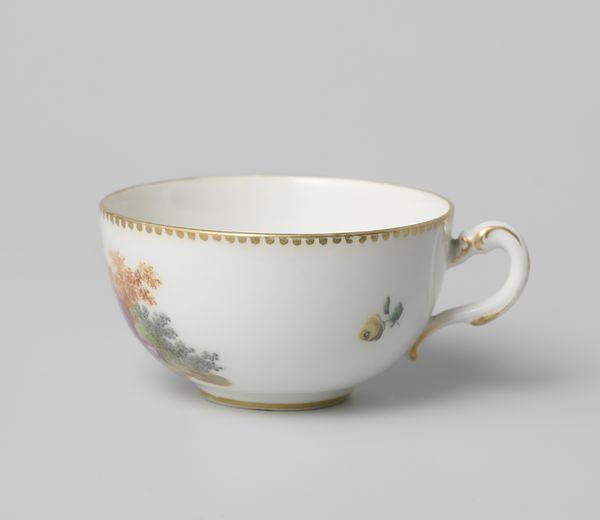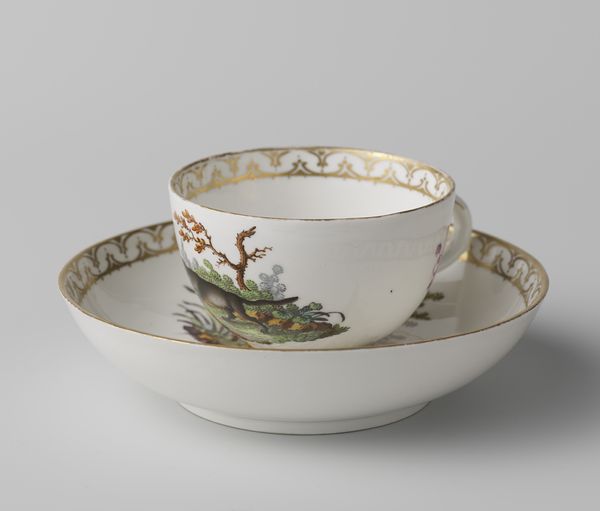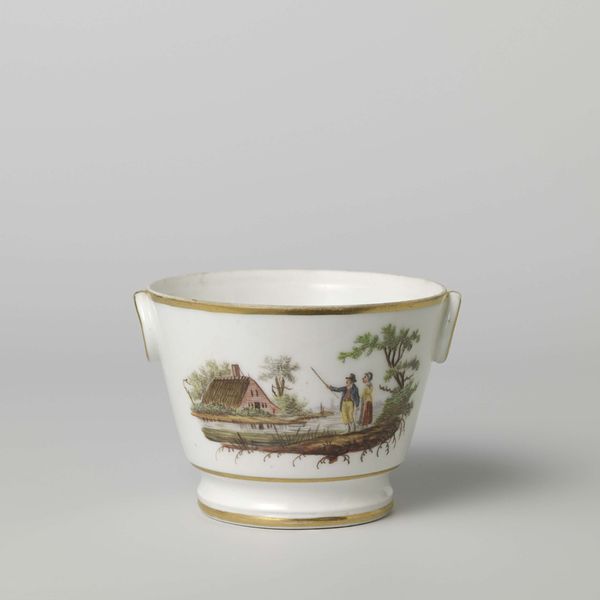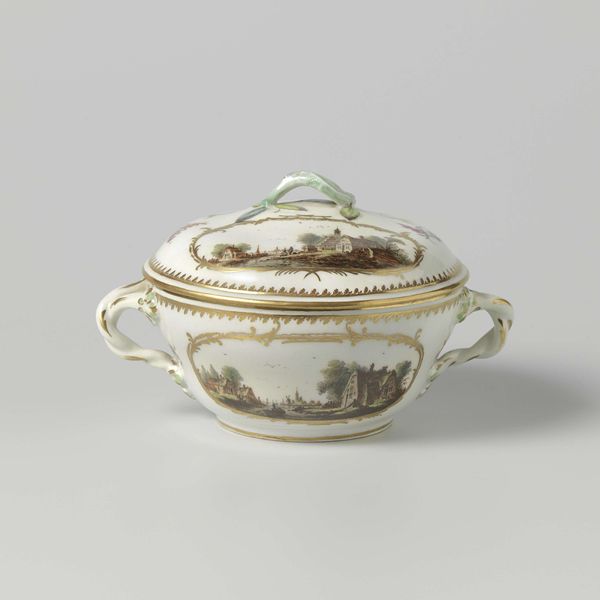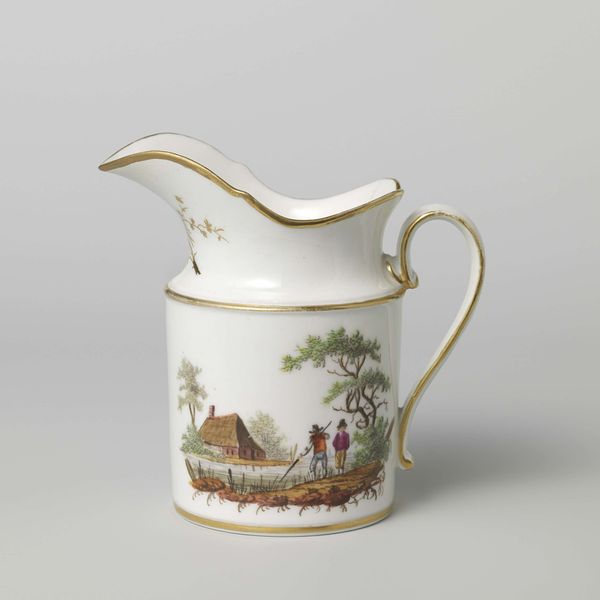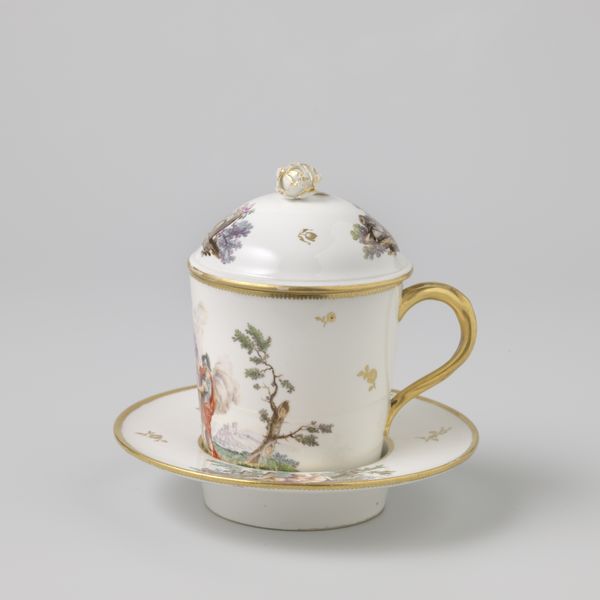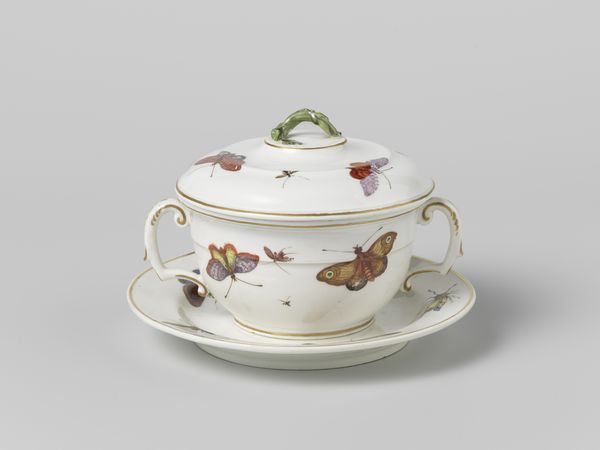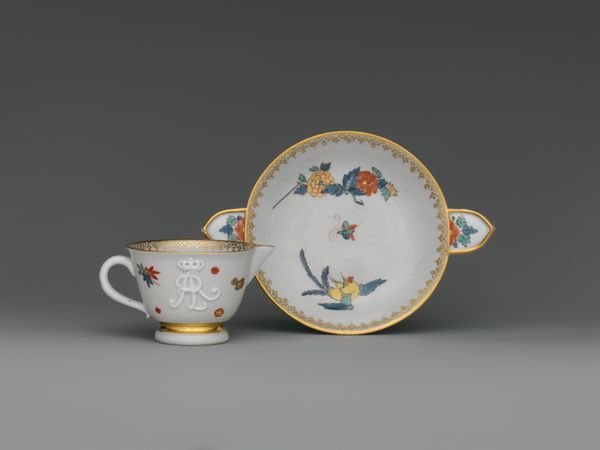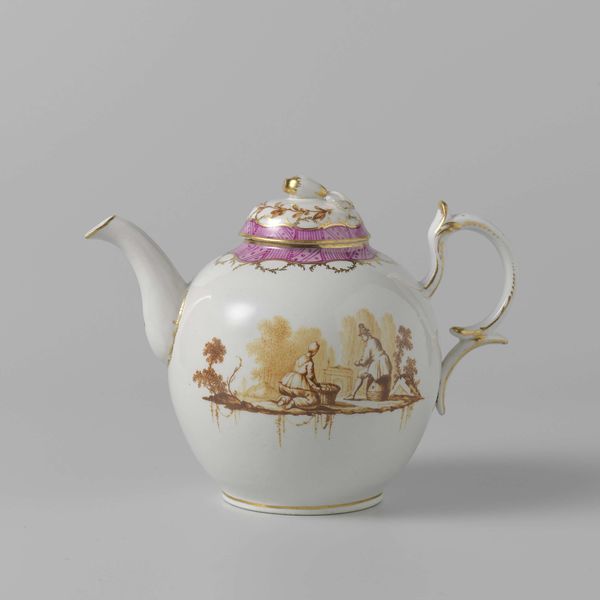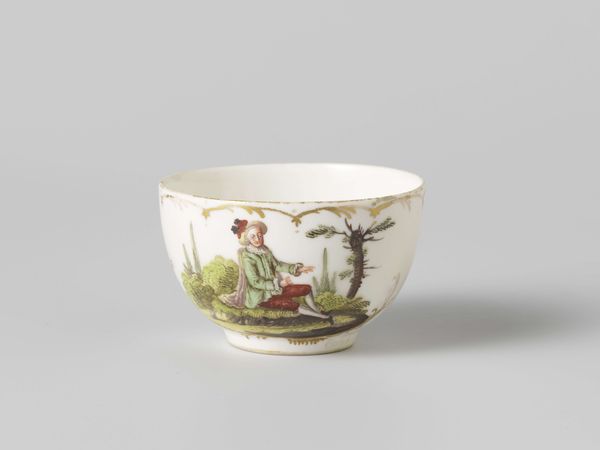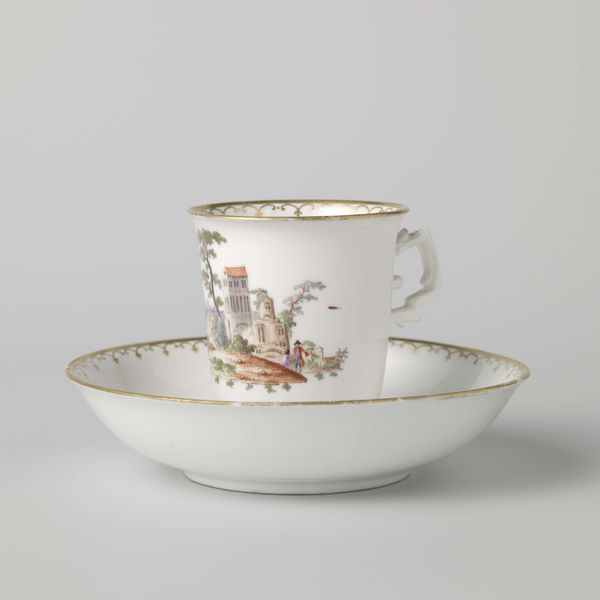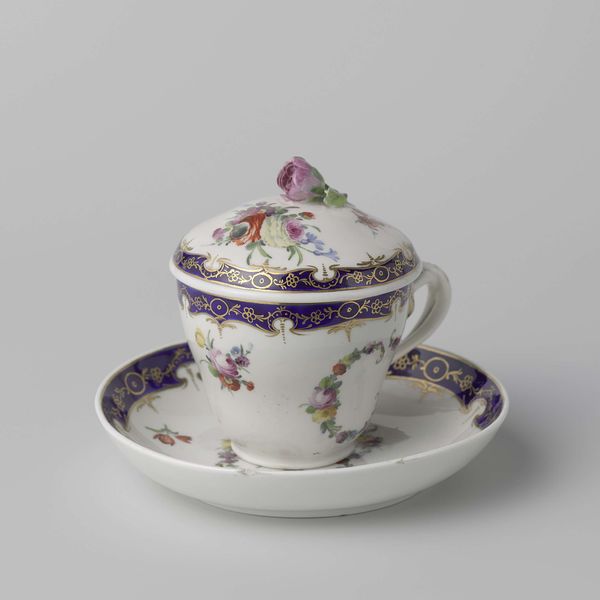
Dimensions: height 4.5 cm, width 10.0 cm
Copyright: Rijks Museum: Open Domain
Curator: This painted porcelain cup, dating from around 1782-1784, was crafted in Loosdrecht. Its painted decoration features poultry in a landscape. What are your first impressions? Editor: It's incredibly delicate. The image is neatly organized as the eye follows a circle of life around it with the small and vivid fauna painted directly onto this almost weightless porcelain form. Curator: Indeed, these objects reflect the rising bourgeois taste of the period. Owning porcelain became increasingly accessible, with local manufacturers like Loosdrecht catering to the demand. Cups like this one demonstrate how art permeated daily life, embedding visual narratives within domestic rituals. Editor: I notice the artist uses very subtle color variations. The almost-monochromatic bird seems a deliberate choice, placing it directly on the bright, contrasting canvas of white. The painting captures this creature with the barest means and is very successful as such. It provides the entire scene's focal point in the visual field. Curator: Cups of this type also spoke to specific social functions: the rituals of tea and coffee drinking became central to social gatherings and household display. The imagery, therefore, served to signal the owner's refined taste and adherence to contemporary trends. What strikes me about this object is how utilitarianism blends into artwork so smoothly. Editor: Agreed! This blend of aesthetic and functionality is striking. The handle mirrors the curving forms within the painted landscape itself, suggesting a self-conscious formal unity. There's such grace here; the painter understood that less is more, capturing just enough to stimulate the eye. Curator: Thinking about the bigger picture here, pieces like this help us understand the nuances of material culture, trade, and national identity that all intertwined in this particular historical moment. This isn't just about art for art's sake, but about how society and power find themselves expressed through what we chose to live alongside. Editor: Right, and close study of elements such as line, form, and space enables a deeper appreciation for the artist’s decisions here. They weren't merely painting a bird on a cup but capturing a larger composition for a sensory and intellectual impact that remains even today.
Comments
No comments
Be the first to comment and join the conversation on the ultimate creative platform.
